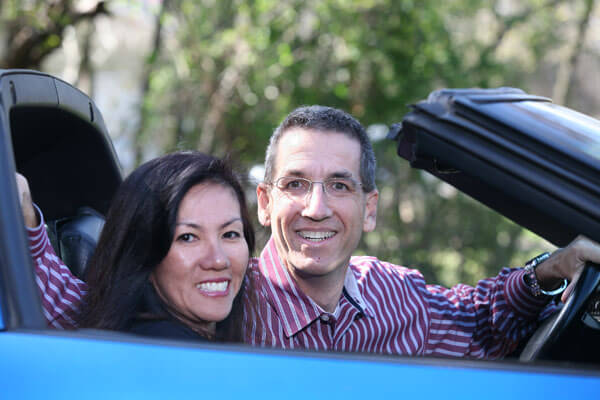“I’m here today because of the professionals at Somerset Medical Center who gave everything they had — their skill, incredible teamwork and the most advanced technology — to give me the best possible chance for recovery.”

On a cold December morning in 2011, Anthony Caruso collapsed while jogging in his Hillsborough neighborhood. A bus driver and another motorist who had come to Caruso’s aid called 911 and started CPR. In minutes, Hillsborough police, Hillsborough Emergency Medical Services and paramedics from Somerset Medical Center arrived and took over the rescue effort.
Caruso had suffered cardiac arrest. The paramedics inserted a breathing tube, administered medications to increase blood flow to vital organs and continued CPR, while repeatedly trying to shock his heart into beating again. After seven unsuccessful attempts, they rushed Caruso to Somerset Medical Center’s Emergency Department (ED).
There, the ED team was able to revive him. All together, Caruso’s heart had stopped beating for more than an hour. “To minimize the neurological damage that occurs when the brain is deprived of oxygen, the ED staff quickly began cooling his body with a lifesaving treatment known as therapeutic hypothermia,” says Mary Wieczorek, RN, director of the ED. “This procedure has been shown to increase survival rates in patients resuscitated after a cardiac arrest.” Doctors in the cardiac catheterization lab also opened a blocked coronary artery and implanted a stent to keep blood flowing to Caruso’s heart.
How Cooling Works
Somerset Medical Center began using therapeutic hypothermia three years ago to improve outcomes for cardiac arrest patients. During cardiac arrest, blood flow to the brain stops, cutting off its oxygen supply and causing cell damage. Therapeutic hypothermia slows down the body’s metabolism, reduces its need for oxygen and decreases the brain’s demand for blood flow.
Patients are cooled to 92 degrees Fahrenheit with a cooling jacket on the upper body and sleeves on the legs. After 24
hours, they are slowly rewarmed.
Treatment can only begin once patients have a pulse. They then should be cooled to the target temperature within six hours, says Jeff DeChellis, MA, FP-C, EMS clinical specialist at Somerset Medical Center. “Studies show that the sooner you can get the patient to the target temperature, the better the outcome,” he says. For this reason, Somerset Medical Center paramedics
carry cooling equipment in their paramedic units, in case treatment can be started en route to the hospital.
“Before this treatment was used, even under the best circumstances I might see only one or two patients a year wake up and return to their normal functioning state while being cared for in a hospital setting. They were the exception rather than the rule,” says Eva Besserman, DO. “About one in six or one in seven patients who receives the therapy after cardiac arrest has an excellent or betterthan- expected neurological outcome and survival.”
Beating the Odds
Many people would call Caruso a lucky man. But it was highly trained professionals using the latest technology who helped the
46-year-old engineer and father of two beat the odds.
“From the person who called 911 to the paramedics who never gave up to the talented professionals in the ED, cath lab and Critical Care, there were many players on this team — and they were all working together,” says Thomas Finer, RN, BSN, CCRN, Somerset Medical Center’s Critical Care manager.
On Christmas Eve — 11 days after he was admitted — Caruso awoke from a coma and squeezed his wife’s hand. On Christmas day, one of his doctors wished him a “Merry Christmas.” He returned the greeting. As his Critical Care nurses gathered to help him out of bed, Caruso surprised them all by lifting himself up and taking four steps, unassisted, to a chair. On January 6, 2012, he was able to leave the hospital.
“Everyone says the only word to describe what’s happened is
‘miracle,’” says Mary Caruso, Anthony’s wife. “My word is ‘amazing.’”
A Bright Future Ahead
Physical therapy has helped Caruso regain his physical conditioning. And though he still has some problems with short-term
memory, “each day is an improvement,” Mrs. Caruso says.
Caruso hopes to return to work soon and resume a favorite pastime — piloting his plane. For now, he’s concentrating on his recovery and his family, which includes a 15-year-old son and 12-year-old daughter.
“I feel great,” Caruso says. “I’m here today because of the professionals at Somerset Medical Center who gave everything they had — their skill, incredible teamwork and the most advanced technology — to give me the best possible chance for recovery.”